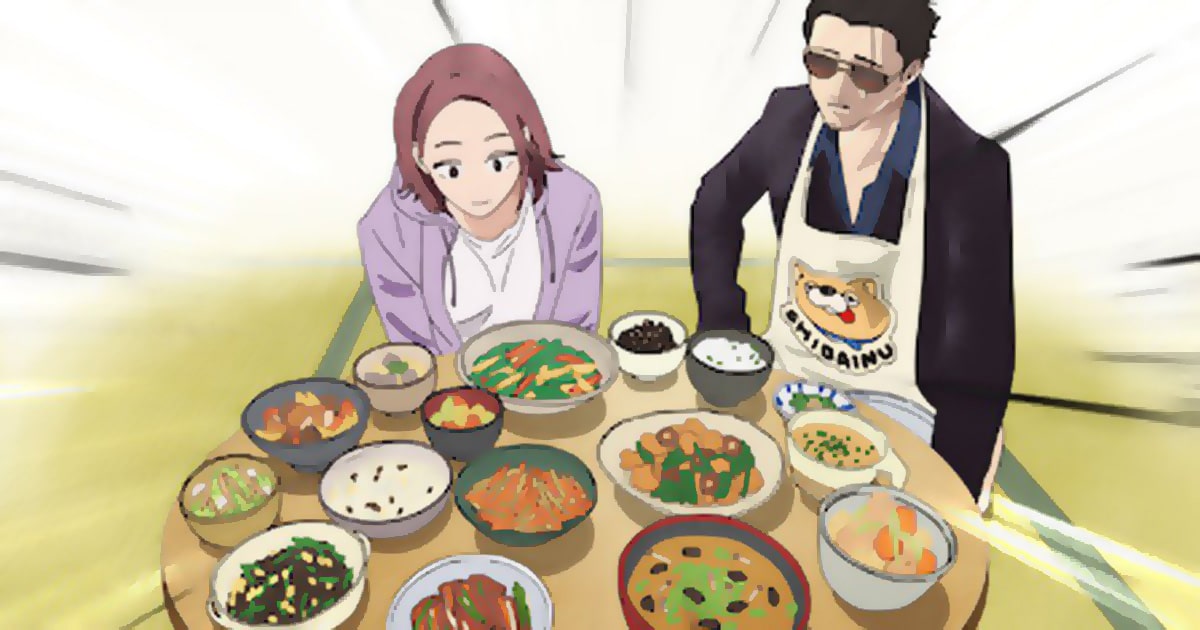The fight for equality amongst genders may be centuries old, but it is still on. And not every day do you see content that breaks gender stereotypes to an all-new level. And for the same, we must rate and recommend ‘The Way of the Househusband,’ a slice-of-life comedic animation on Netflix, as an epic watch.
The show centers on Tatsu, an ex-yakuza or ex-gangster who decides to give up his life of crime and settle down as a househusband. The oddity of the show has occasionally drawn criticism, particularly for its “non-moving” animation design. But it’s still a hit on Netflix, and it even got a second season.

Why Netflix’s The Way Of The Househusband’ Stands Out
The main character’s appearance is one of its most distinctive aspects. Although the “Immortal Dragon” Tatsu has given up fighting, he is still struggling against gender stereotypes. He humorously and organically redefines what it means to be a husband in the first season.
The chapter on clothing in the old masculinity manual is one of the strictest. Men ought to dress in pants. Men should not wear makeup. Men should never wear an apron, by the way. Tatsu’s apron, however, is his most iconic piece of attire. As it covers all of his other attire, it overpowers the distinguishing characteristics of his character design, such as his yakuza tattoos, typically associated with men.
Also, read: 5 Leadership Lessons We Can Learn From Netflix’s “The Crown”
Tatsu never lets his sense of guilt get in the way, whether he needs to dance or dress differently. Often confused with confidence, pride is a part of conventional masculinity, although the two are completely distinct ideas. While pride might prevent Tatsu from dancing with older women, confidence is the reason he does.
He has a daily responsibility that he takes very seriously: cooking. He is not a chef by trade, unlike figures like Sanji, the pirate cook from One Piece. He doesn’t receive any money or recognition for his baked goods and bento lunches. He keeps up his efforts, nevertheless. He usually does both – the cooking and cleaning since he doesn’t want to offer his wife any favors or give her a break. He has become an expert chef in order to support his partner’s career; he is not a guest in his kitchen anymore.
Tatsu offers assistance in many different ways, and because his activities are motivated by compassion, he has garnered the admiration of many spectators. His behavior toward others is endearingly aggressive, whether taking care of kittens, wearing Shiba Inu pride on his apron or chasing after his wife when she forgets her lunch. Acting from his more compassionate and empathic side, he creates empowered strength rather than weak vulnerability.
Tatsu’s respect for others, especially his wife, is ultimately what sets him apart from other characters. The more prosperous partner in their partnership is Miku. She is a full-time working designer who provides for her family. Her spouse never challenges her decisions to continue working after being married or to delegate housekeeping to Tatsu. As a result, Tatsu is even more inspired to support his wife by providing for their home. Because of their regard for one another, they are portrayed as strong and enviable pair.
Also, read: Aquaman – 10 Life Lessons And Best Pieces Of Wisdom We Picked From The Movie
Tatsu Is The Man Of Our Dreams
Tatsu frequently has stereotypical feminine traits, such as sympathy and cooking, portrayed as screen gags while backed by groovy music and bizarre images. One could argue that making fun of it tacitly promotes gender uniformity.
The show truly denies the underlying cause of toxic masculinity by converting the gravity of its subject matter into absurd and comical situations. Much like Tatsu, the anime overcomes pride by making its jokes obvious and self-reflective.
In the end, The Way of the Househusband redefines tradition and masculinity as it shows the guy in the apron – soon to be seen in live-action as well – modestly, hilariously, and confidently.

